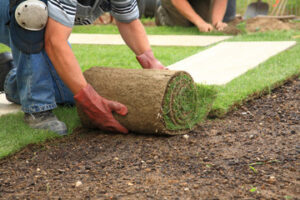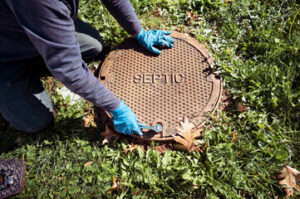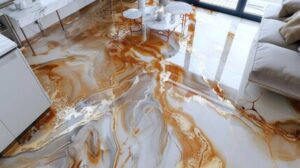Landscaping Fayetteville AR improves the quality of your home environment by adding beauty, value and function to it. It helps prevent soil erosion and weeds, provides shade and comfort, and attracts wildlife to your yard.

A well-designed landscape should use principles of design including color, form, contrast, unity and simplicity, balance and proportion.
Plants are the backbone of luxury landscaping, offering a plethora of benefits that go far beyond aesthetic appeal. From enhancing air quality to fostering biodiversity, the role of plants is multifaceted and essential to sustainable landscape design.
Incorporating native plants into your landscaping creates a beautiful, self-sustaining environment. These species have evolved to thrive in the climate, soil and environmental conditions of your region, ensuring they will adapt naturally to any changes to their surroundings.
This self-sufficiency also means that native plants will require less water than non-native counterparts once established, contributing to the conservation of natural resources. Unlike conventional turf and ornamental garden varieties, native grasses, wildflowers, shrubs and trees are naturally resistant to drought conditions and can survive harsh weather conditions without the need for irrigation or chemical intervention.
Moreover, native species are able to absorb pollutants from the environment through their leaves and roots before releasing clean oxygen into the atmosphere. This reduces the amount of pollution entering your home and surrounding community, improving indoor and outdoor air quality.
Native plant species can also serve as a natural habitat for local wildlife, providing food and shelter to birds, insects and other animals. As natural habitats have been displaced by urban development, the inclusion of native species into your landscaping can help to sustain a thriving ecosystem.
Finally, native plants have a natural resistance to pests and diseases. Having coexisted with their indigenous peers for generations, these species have developed built-in defenses against local threats, reducing the need for costly chemical interventions and promoting environmentally responsible gardening practices.
Native plants can also reduce erosion caused by runoff, stabilizing the soil and preventing it from washing away in heavy rains. This is in contrast to modern lawns and exotic gardens, which can contribute to poor water quality, flooding risks and nutrient depletion.
Hardscapes
Hardscapes are the elements of landscaping that are made from hard materials such as pavers, brick, concrete, rock and other solid surfaces. These materials are used for a wide variety of applications and can transform your outdoor spaces into a relaxing retreat or an entertainment area. Some common examples of hardscapes include paved areas, driveways, patios, walkways, walls, and water features.
When properly designed and installed, hardscapes can be very functional and durable. They can also add a dramatic impact to your landscape. When used in combination with plants, they offer a beautiful balance of color and texture.
The primary benefit of hardscapes is that they require much less maintenance than softscape elements. With hardscapes, there is no need to regularly water or weed, and there are no mowing or trimming requirements. This can save you both time and money in the long run.
In addition, the use of a hardscape design can reduce erosion in your landscape. The weight of heavy materials like stone or concrete can help to prevent erosion by holding the soil in place. The varying textures of the stones or concrete can also create a more natural look and feel in your landscape.
When combined with proper planting, hardscapes can also minimize the need for irrigation and fertilizer. Depending on your location, this can be a big savings for homeowners. In addition, the use of hardscapes can make it easier to maintain your landscape during drought conditions, as it eliminates the need for extra watering.
Besides saving you money on maintenance, the use of hardscapes can enhance your curb appeal and increase your home’s value. This is especially true if you install pavers, concrete or rock in the front yard or around the house. This is because it is one of the first things that prospective buyers will see.
Whether you are looking to improve the look of your home’s exterior, create a space for entertaining or simply relax outdoors, Belgard offers a wide range of hardscape products that can complement any style of architecture. Browse our products online and contact a Belgard Authorized Contractor to find a solution that meets your needs.
Lighting
When lighting is used well, it transforms the home and yard into a dramatic showcase for all to enjoy. It can highlight features like fountains, ponds, flower gardens, patios and pergolas — anything that stands out in your landscape design. Lighting can also be used to illuminate walkways and paths around the property. This is especially helpful for areas with stairs or a lot of curves, as it can help keep people safe from falling and hurting themselves.
While the beauty of lighting is a huge benefit, it can also boost your home’s value. A professionally-installed lighting system can attract more potential buyers and set your home apart from others on the block. If you’re thinking about selling your home in the future, then a quality lighting system is worth the investment, as it will help your home sell faster and for more money.
Aside from highlighting the beauty of your landscape, the right lighting can also be used to create a sense of safety and security. It can deter trespassers and theft, as well as prevent injuries for you and your guests. Illuminating pathways, entryways and driveways can also prevent people from tripping or twisting their ankles.
One of the most popular uses for lighting in landscaping is to add a focal point. This is usually a feature that stands out in the landscape, such as a statue, water fountain, or unique plant. It is important to note that this feature should be carefully planned out in order to ensure that it is both functional and aesthetically pleasing.
Another function of landscape lighting is to highlight a physical border, such as a fence or shrub. This can be a useful way to define the boundaries of your property at night, particularly when it is difficult to see the edges of your yard in low light.
A beautiful yard and exterior are essential to the look of a home, but it can be hard to maintain during the dark hours. With the help of landscape lighting, homeowners can enjoy their outdoor spaces at any time of day. The right lighting can be used to accent special plants, highlight architectural elements and walkways, and add a sense of safety and security to the property. It is also a great way to increase the usability of the yard, making it an enjoyable place for everyone in the family to relax and unwind.
Water
In landscape design, the use of water can create focal points and add beauty to your outdoor space. It can also be used for practical purposes, such as watering plants and reducing soil erosion. Water features, such as ponds, waterfalls and water lilies, can bring a sense of tranquility to your yard. They can also provide a place for birds and other wildlife to bathe and cool off.
A beautiful landscape can make your home more attractive and increase its resale value. In addition, it can reduce noise pollution and air pollution by acting as a natural buffer between your home and nearby roads or businesses. Moreover, well-designed landscaping can encourage people to spend more time outdoors, which is good for their physical and mental health. Spending time in nature has been shown to reduce stress and increase happiness.
The type of landscape you have can also impact your energy costs. For example, planting trees and using hardscaping that requires less water can help you save money on your energy bills by shading your home in the summer and reducing heating and cooling costs in the winter. Additionally, the proper placement of trees can lower your energy bills by preventing wind from blowing debris into your home.
Your landscape can also act as a mini-ecosystem, helping to protect local biodiversity and improve your property’s overall environmental quality. For instance, native plants attract pollinators and can reduce the amount of nitrogen in runoff and groundwater. Trees can also reduce carbon dioxide levels and improve air quality by absorbing emissions from vehicles and buildings. Finally, landscaping can prevent soil erosion by utilizing elements such as retaining walls and terraced gardens.
Landscaping is a broad term that includes modifying the terrain, installing structures like fences and patios, and adding plants and water features to an outdoor space. However, the best way to determine how to approach your landscape is to look at it as an extension of your home and consider what functions you want it to serve. By following these steps, you can create a unique, aesthetically pleasing, and functional outdoor environment.


